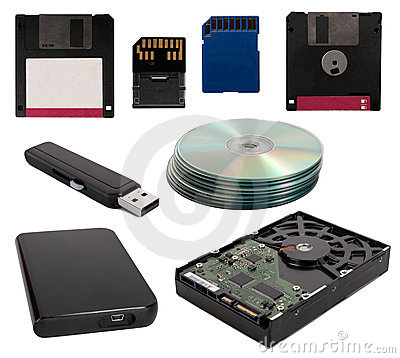Data storage has evolved dramatically in the past few decades. Initially, computer owners used 8-tracks, vinyl records, cassette tapes and eventually floppy disks. Eventually the storage industry provides multiple forms of optical media, such as CD and DVD. Eventually, demands for both cassettes and floppy disks began to decline, due to their shorter durability and more limited storage. In the digital era, it is more important for people to get familiarized with more appropriate storage options in the market. Personal computers no longer have 3.5-inch disk drives and people prefer to use optical drives or USB flash drives. This technology has become a museum piece and many newer generation of computer users don’t even know how a floppy disk looks like. In fact, Apple has removed floppy drives from its Macintosh computers since 1998. In 2006, there are still plenty of demands for 3.5-inch disks, but the number of demands has reduced significantly by 2010. On the other hand, compact discs or CD was introduced since 1980 and it eventually became the next form of storage.
Unfortunately, early forms of CD aren’t satisfactory and people were not able to write more data onto it. Data CDs were sold with information in them and people still used floppy drives for their writable solutions. Rewritable CDs were available, but can be very expensive in 1990’s. But eventually, optical technology breaks out of its shell and it starts to dominate the consumer level media storage. Standard blank CD-R storage could provide us with nearly 700MB of capacity, available for any kind of data, such as video, music and others. CD burning equipments were also quite affordable and they are often available for less than $35. Then, DVD arrived and provided us with much more storage solutions. It comes with 4.7GB capacity in its original format and the dual-layer version could hold about 8.5GB. Next evolution in optical storage option includes HD DVD that offers up to 30GB and Blu-Ray at up to 50GB of storage capacity. However, burners for these improved optical options can be rather high, in some cases, $300 or higher, depending on the features.
This high capacity optical option can be rather expensive, up to $25 for each disc, depending its storage capacity. However, as these discs are available in higher numbers and business starts to pick up, we could expect that these discs will become much cheaper. However, standard CD and DVD could still be suitable even for today’s purposes. Eventually, worldwide sales of DVD sales will go down and it will eventually be replaced. Single-layer versions of these improved disks versions will become much more popular. There are many storage options in the market and it is important for consumers to choose the most proper options. These storages should be ranked based on their values and this will offer us the ability to choose models based on our requirements or budget. In general, 100 DVDs can be equal to standard-sized hard drives.

